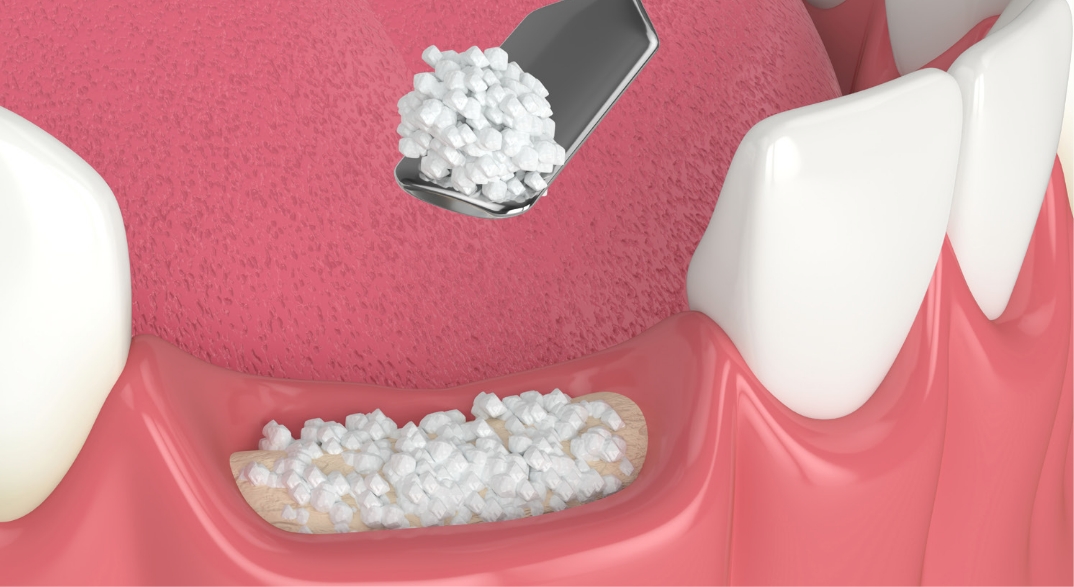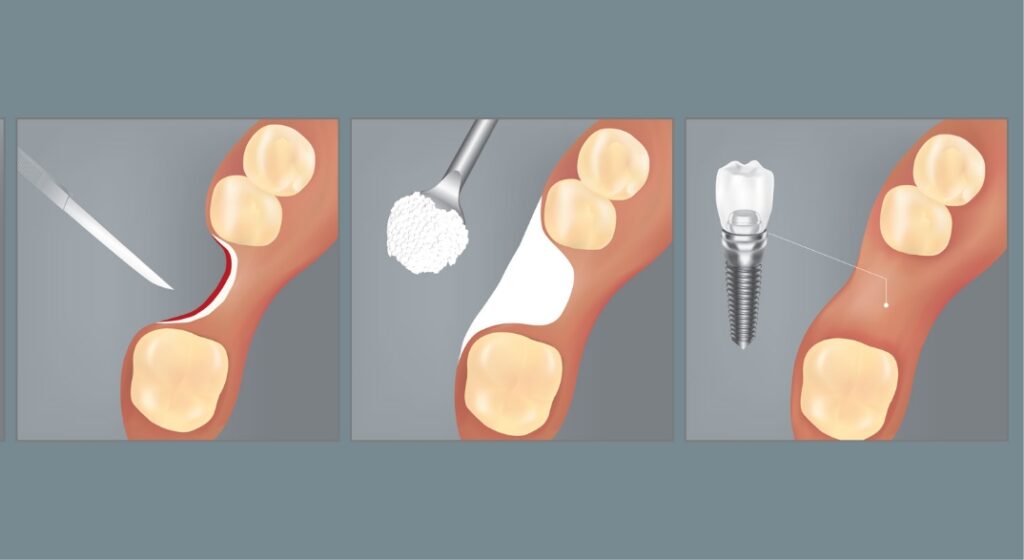Why Do I Need
Bone Grafting?
If left untreated, the progression of periodontal disease can have damaging results, including shifting teeth, jaw pain, and bone loss. The presence of natural teeth allows patients to chew and bite, and it is through these routine activities that the jawbone is strengthened. Missing one or multiple teeth can alter these routines, causing the jawbone to deteriorate and resulting in more serious problems, such as:
- Additional tooth loss
- Headaches and pain in the jaw and face
- Difficulty chewing and eating
- Problems speaking and communicating
- Increased wrinkling around the mouth and face
Our practice provides patients with several options for restoring healthy smiles with regenerative bone grafting procedures such as:

Strengthen and Restore Bone
and Your Confidence
Dr. Tanner and Dr. Monaghan help patients build confidence in
their smiles with regenerative bone grafting procedures.

Guided Tissue/Bone Regeneration
Our doctors use advanced bone grafting techniques to restore or regenerate lost bone around teeth. With certain types of bone loss, bone grafting can be used to stabilize a tooth and prevent it from requiring extraction. Bone graft material is generally combined with growth factors or a collagen membrane to allow bone to “regrow” around a tooth.
Socket Preservation
There are many situations that require the extraction of certain teeth, including infection, pain, injury, or bone loss. However, a missing tooth can cause surrounding gum tissue and bone to recede at a fast pace.
By filling the space left behind from a missing tooth at the time of tooth removal with bone graft material, our doctors can minimize jawbone loss. This socket preservation technique allows the body to repair the damaged area, and provides a strong foundation for future dental implants, bridges, or dentures.


Ridge Augmentation
When one or more teeth have been missing for a while, an indentation or concavity can develop in the jawbone. Our doctors can correct this defect with ridge augmentation bone grafting. This procedure can improve the quantity and quality of bone and gum tissue needed for the placement of dental implants or bridges.
